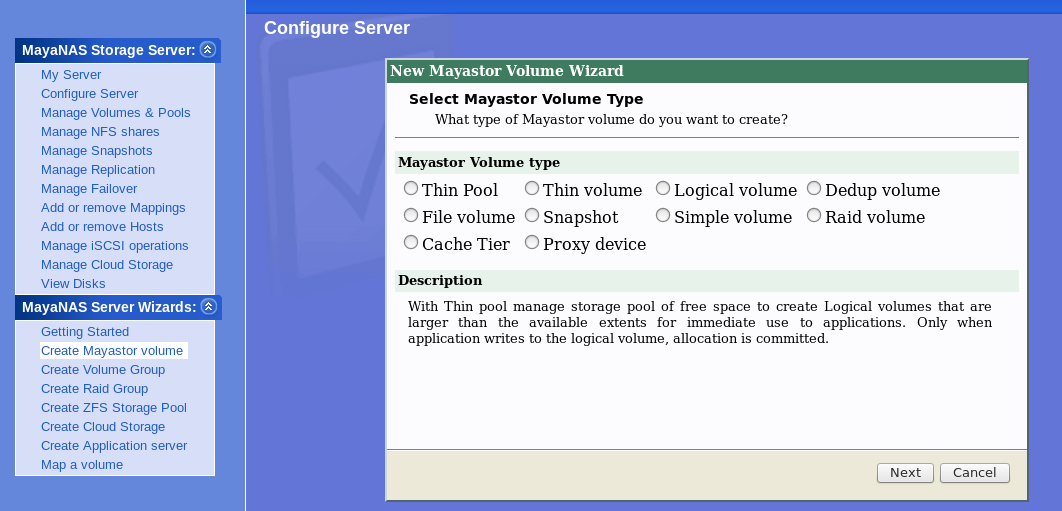Mayastor volumes are data services that are carved out of storage pool, individual disks, RAID devices, raw files or VM images, dedup, compression, and cache volumes. Once these volumes are defined they can be shared over your choice of iSCSI, FC or NVMeoF network for block storage. Here is the summary of those
Thin Pool
With Thin pool manage storage pool of free space to create Logical volumes that are larger than the available extents for immediate use to applications. Only when application writes to the logical volume, allocation is committed. This type of pool is created over LVM2 volume group and thin snapshots provide better scalability compared to older thick snapshots.
Thin Volume
Thin provisioned volume allows you to create logical volumes that are larger than the available extents, as they are allocated only when application writes to them. Thin volumes can be created using zpool or LVM thinpool. When combined with raid groups they provide higher data availability.
Logical Volume
Logical volume provide great flexibility in storage provisioning. The volumes can be dynamically resized without loss of data and downtime.
Dedup Volume
kvdo volume provide inline block-level deduplication, compression, and thin provisioning capabilities for primary storage. The memory requirement is only 268M for 1TB of data, while dedup with ZFS require 5GB for 1TB of data.
File volume
File volume allows easy storage provisioning from file system which greatly simplifies LUN management. With ordinary files used for LUN mapping it is very easy to identify the associated application. In addition to raw files Mayastor supports virtual machine images of type vmdk, vdi, qcow, qcow2, vhdx to be served as storage LUNs without any conversion requirement.
Snapshot volume
Snapshot volume is a point-in-time copy of the logical volume useful to recover from accidental deletions, corruptions, or modifications of the data. Snapshots can be created manually or with a schedule policy as often as 30 seconds. Snapshot delta pave the way for efficient replication service with RPO of 1 min. The following type of snapshots are supported
- Thick LVM snapshots
- Thin LVM snapshots
- ZFS snapshots
Simple volume
Simple volume represent any valid block device recognized by the Linux kernel. Use this option for disks with existing data to be shared. However such volumes may not be dynamically resized or managed.
Raid volume
Software raid volume provide higher data availability and performance. Use this option to provide host offloaded raid functionality for application servers. Depending on the raid software the disks may be dynamically managed.
Cache Tier
A multi-tier cache is a replicated/distributed cache that consists of at least two tiers: one is represented by slower but cheaper rotational block devices (hard disks), while the other is more expensive but performs faster data operations (for example SSD flash disks).
Proxy device (Deprecated)
Proxy device simply provide protocol bridging to legacy SCSI devices. Select any SCSI device to be bridged over Fibre-Channel or iSCSI network.
